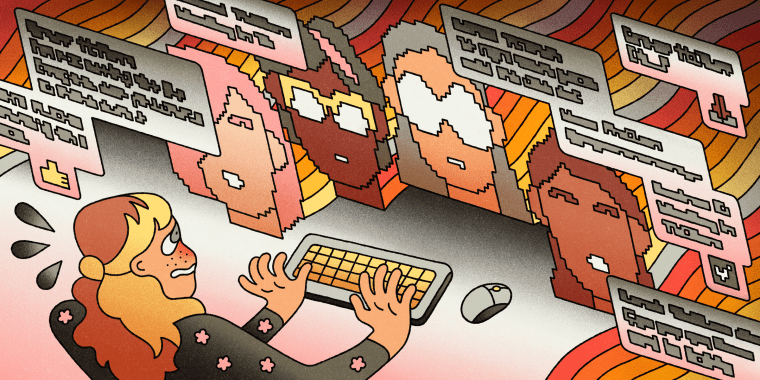While we were already bombarded with screens and smartphones beforehand, the pandemic has made us even more dependent on our devices to stay connected with friends, family and, for many working from home, our colleagues and co-workers. But with the abundance of digital communication, it’s easy for conversations to be lost in digital translation.
A few oddly placed exclamation points, all caps or even the dreaded “as per my last email” can often leave friends and co-workers with a less-than-fuzzy feeling when really we might have been saying something with a smile. TMRW spoke with etiquette expert Diane Gottsman for a few pointers on how to avoid miscommunications.
When communicating in the workplace
Office conflict is nothing new, but when it’s more difficult to connect with co-workers in an informal way, it’s harder to de-escalate simple office disputes. When there was a butting of heads in the workplace pre-pandemic, you could connect in person and resolve the situation with something as simple as laughing over lunch or talking by the water cooler. Now that many interactions are boiled down to communicating over email, Slack, Zoom or Microsoft Teams, the playful tone that was once simple to convey with a smile is now limited to a message or call. And it’s easy to get caught up with work stress and forget the usual ‘Hi, how are you?' before rattling off requests.
To avoid these mix-ups in communication, it’s important to be extra attentive to what we’re saying and how we’re saying it.
“Avoid 'got it,' or an evasive 'we need to talk.' While it might be the simple message you want to communicate, it can come off as short or overly direct,” Gottsman said.
Gottsman also noted that you should “emoji with caution” when chatting with colleagues. To you, a winky face or a thumb’s up may be a playful way to show you got the message, but it can come off as passive-aggressive in certain scenarios.
“If you have an established relationship with a co-worker and you both are particularly casual with each other, then emoji by all means. But if you haven’t worked very much with this co-worker before, it may be best to err on the side of caution,” Gottsman said, addiing that emojis can sometimes help convey tone, but it’s best to be careful in case it can be taken the wrong way.
What to remember before your next digital meeting or chat
Think before you hit send. Could your tone be misconstrued?
If you’re choosing to dictate a text, double check it before you send.
Try to lean on the side of neutral. You may read the joke as funny, but it might not come across that way to the recipient, and it's more difficult to read their reaction without being in person.
Think about turning on your camera more often. It can be a source of support and comfort to see a familiar face.
Group message with caution. If you’re only addressing one person in a group chat, could that message make them feel embarrassed or targeted?
When communicating with friends
Friends and family are typically easier to communicate with because you’re more familiar with their dispositions, but it doesn’t mean you’re off the hook when it comes to clarifying tone. Sometimes we can get a little too comfortable with family, Gottsman said.
“We’re all extremely fatigued," she explained. "Sometimes we don’t even realize how much so, and our message or even phone call can come across as if we’re annoyed with that person when really we’re just preoccupied with the stresses of everyday life.”
“I say give people grace. We’re all doing our best nowadays."
Diane Gottsman
Even with family and friends who know how we feel about them, it can seem like we’re less than happy to talk when we end a conversation with a thumb’s up or even the ominous “K."
Avoid overly abbreviated messages, Gottsman suggested, and try writing in the tone of voice you’d typically speak in face-to-face. Instead of writing, “Going on a run. Talk later,” try, “Hi! Having a busy morning and I’m about to run out the door for a run, but would love to connect later. Tell me when you’re free.”
If you're concerned about how well your message is getting across, remember that we’re all still adjusting to our "new normal," and people are usually understanding about that.
“I say give people grace. We’re all doing our best nowadays," Gottsman said. "Even when you read something that may have come off as rude or inconsiderate, I’d say 9/10 the person didn’t mean it that way. We’re all going through it and you never know what someone’s going through. Take a deep breath, and try to give people the benefit of the doubt."


